Resource Management Best Practices: 17 Rules & Strategies for Motivated Teams
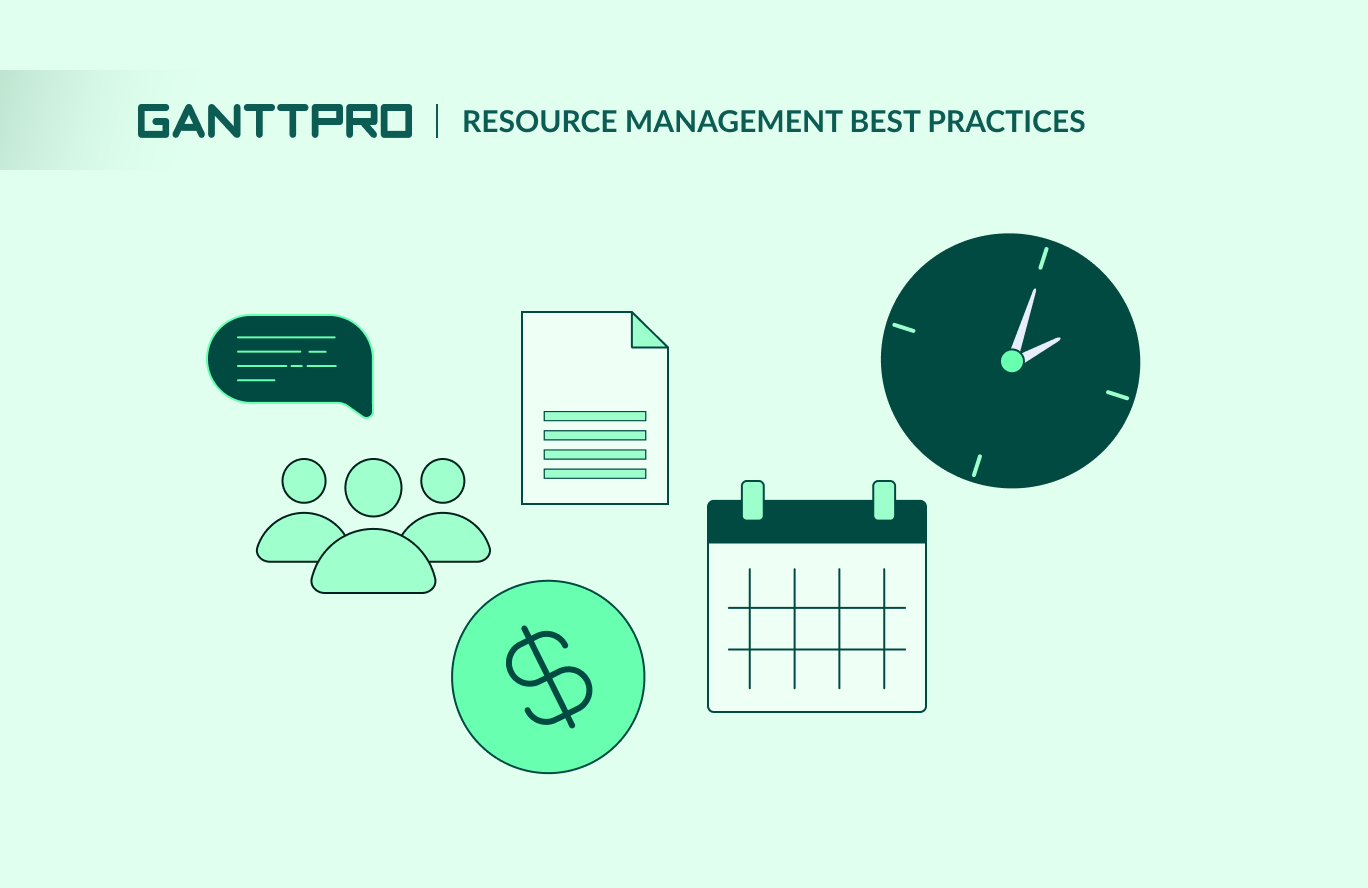
Audio version:
Resource management is one of the factors for successful project execution and a driving force behind organizational advancement.
Proven resource management best practices are vital for planning, organizing, and utilizing project management resources. By implementing them, you can enhance team efficiency, ensure timely work completion, and maintain your competitive edge in a fast-evolving market.
Below we list the main practices, offer practical tips to implement them, and emphasize the use of one of the top resource management tools for these purposes.
17 resource management best practices
- Establish clear goals and objectives.
- Analyze your team’s capacity.
- Determine the type of your future resource calendar.
- Make resource management software your strategic ally.
- Establish project budget.
- Organize tasks and keep them under control.
- Identify resources and allocate them properly.
- Assign roles and responsibilities.
- Make time control as effective as possible.
- Balance workload avoiding underutilization and overburn.
- Cope with resource constraints and other obstacles.
- Consider non-project time.
- Recognize risks and be ready for unforeseen circumstances.
- Review and adjust resources.
- Practice detailed reporting as a good habit.
- Keep in touch with industry experts.
- Stay informed with the latest industry insights.
Is it actually easy to manage resources?
Each project manager will probably answer this question differently. However, if everything were so simple, then experts around the world would hardly identify resource management best practices and seek recommendations on how to apply them.
The challenging nature of resource organization is confirmed by the responders of the survey within Wellingtone’s State of the Project Management report (2024). They identify resource management as one of the three most difficult PM processes to implement.
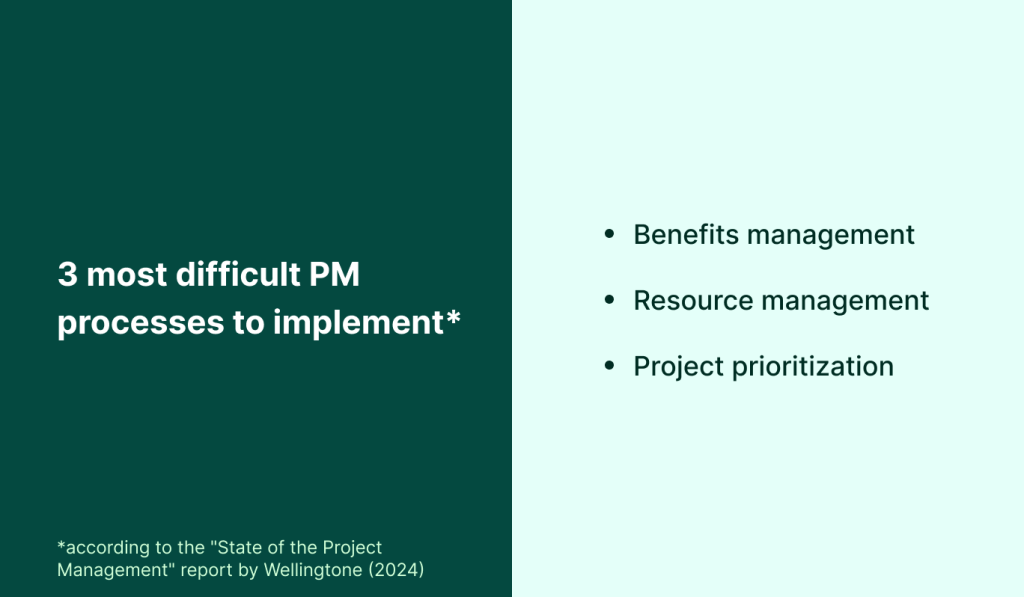
Fortunately, young teams and managers without experience can take into account the practices and backgrounds of their colleagues to confidently set themselves on the right path and quickly achieve success in working with project assets.
The importance of resource management is further emphasized by the fact that many teams consider this process one of the most important in project management as a whole.
For example, in his article, Barry Goldberg, a strategic PM and operations leader, titled resource management as one of the 5 project management trends in 2023. He claimed:
Resource management is integral to the company’s strategy, and not to be seen as a back-end, administrative function. It follows a centralized, global model in the organization.
So, what are the project resource management best practices that should be studied by every ambitious and motivated project team?
Let’s figure them out.
1. Establish clear goals and objectives
Any strategy or business practice begins with defining and setting appropriate goals and objectives. Managers usually determine and communicate them before drafting a resource management plan and allocating available assets.
Both goals and objectives should be specific, measurable, attainable, relevant, and time-bound (according to the famous SMART concept). By aligning your future resources with predetermined goals, your team will be able to prioritize all project activities effectively and ensure that work assets are utilized where they can make the most significant impact.
At this initial stage, it’s also important to consider popular resource allocation methods and decide on the most suitable option that will lead your asset management efforts to winning outcomes.
2. Analyze your team’s capacity before planning anything
One of the essential resource management best practices in the workplace is to proactively consider all the activities your team performs to ensure projects are successful.
Often, employees lose a large amount of time to communicate about work, search for information, manage shifting priorities, switch between apps, and more.
Sometimes they may even perform tasks completely outside their area of responsibility. Therefore, managers need to be extremely careful when planning resources based on the perceived capabilities of their team and consider small but important related tasks.
This is especially important when running resource planning for multiple projects.
3. Determine the type of your future resource calendar
Before you begin planning and allocating resources, you need to decide on the structure of your future resource calendar where you will keep track of the required project assets.
You can use traditional spreadsheets or rely on modern online PM tools.
To ensure that your calendar meets the needs and wishes of each team member, you should pay enough attention to choosing software with relevant functionality.
4. Make resource management software your strategic ally
The next point in the list of resource management best practices in business relates to the use of a powerful technology solution.
Let’s face it, modern project managers without resource scheduling tools are like conductors without conductors’ batons.
A professional PM tool with resource management functionality will enable companies to centralize resource data, monitor their utilization, and automate repetitive activities such as resource scheduling and allocation. It will assist in minimizing manual errors and enhancing overall productivity.
Experienced managers know that professional resource allocation in project management can be made with the help of an online Gantt chart. They seek a good example of software based on this chart that will lead their projects to business success.
Among the best Gantt chart software, GanttPRO has every chance to be considered the most versatile and multifunctional since it is widely used in a variety of projects: from software development to the construction of residential areas or the launch of new manufacturing lines.
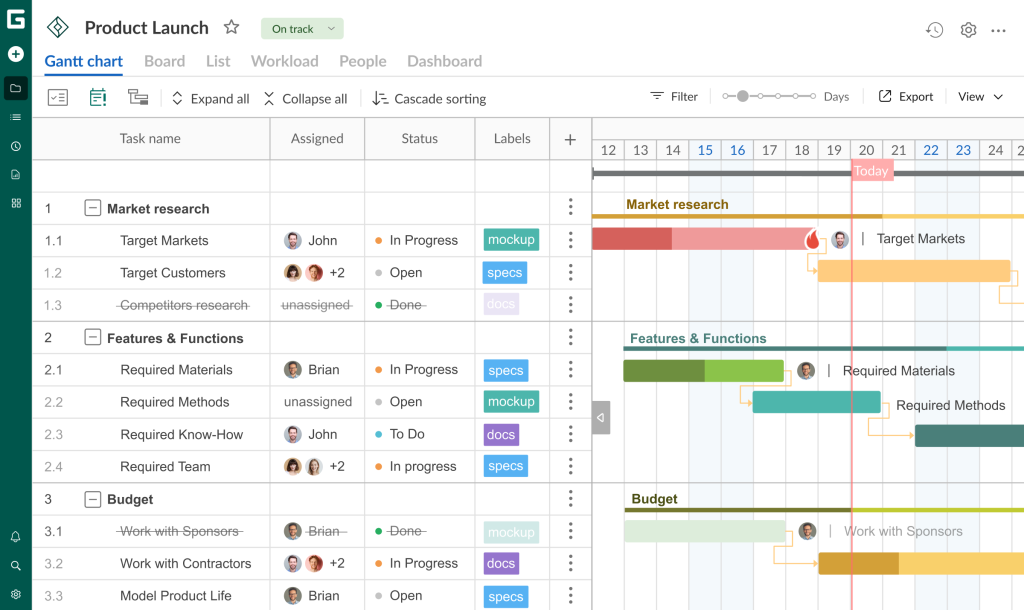
If you want to get smart task visualization and improve work planning, deadline control, progress tracking, and team collaboration, as well as realize how to allocate resources with ease, then GanttPRO is an excellent choice.
Modern companies choose GanttPRO as it satisfies teams with basic PM needs and guarantees that they get a complete overview of projects, tasks, and resources in one place.
Project teams rely on GanttPRO as it helps them schedule, organize, and analyze project tasks and serves as reliable resource management software.
The platform is also good for visualizing many resource management techniques.
5. Establish project budget
Detailed budget management allows project teams to determine all the costs associated with each initiative and assess its viability. It also enables them to avoid investing in activities that aren’t feasible or cannot provide an effective return on investment.
Therefore, it’s crucial to have a list of all the costs associated with each project. You can utilize this data to direct the majority of your budget towards high-priority tasks while allocating a lesser portion to less pressing initiatives.
In GanttPRO, you can schedule finances for your project and track expenses in real time, staying within budget constraints. It’s pretty easy here to determine costs for all resources per hour, per item, or just cost.
6. Organize tasks and keep them under control
Before moving to the essence of effective resource management, one more essential practice should be considered.
This practice includes dividing a project into smaller tasks. You can make subtasks and visualize as many activities as you need on a handy timeline. The work breakdown structure (WBS) will help you make this procedure smooth and seamless.
By the way, GanttPRO is also known as a powerful WBS creator, so you can effortlessly use its capabilities to organize your tasks. The platform offers the drag-and-drop feature to visualize task dependencies and place required milestones on a GanttPRO timeline.
All data updates will be in real time, so your colleagues will see their new tasks in an instant.
7. Identify resources and allocate them properly
This practice means that you have to gather all the details about the resources you want to include in your project.
Consider all assets like staff, costs, time slots, facilities, materials, equipment, software, hardware, vehicles, and so on.
It is critical to understand whether your resource calendar will reflect a singular project or numerous projects.
Allocating resources to projects and tasks is also a logical part of this practice.
In GanttPRO, you can work with all types of resources. The software enables the assignment of certain employees or resources to defined project tasks. With this feature, you can specify time periods or duration for each allocation.
With only several clicks, you can invite certain team members, set costs and personal calendars for them, and specify their roles. Additionally, you can add virtual resources including people, vehicles, hardware, etc.
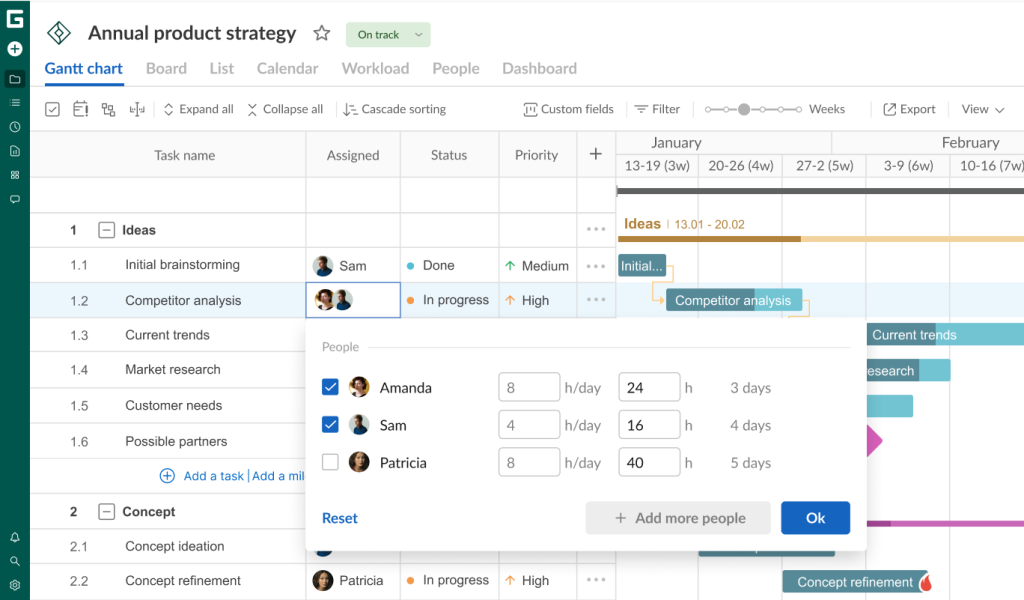
8. Assign roles and responsibilities
Each team member must clearly understand their role and responsibilities. However, this practice is often neglected, so chaos may arise quickly.
In GanttPRO, you can define specific roles and permissions at the account level as well as rights and permissions at the project level. It allows for easy specification of who can view, edit, or approve your project-related data, ensuring access control and security.
If required, you can add your own custom roles and rights.

Online resource management tool
Manage tasks, control resources, consider deadlines, and complete projects on time.
Sign up for free9. Make time control as effective as possible
When all resource plans have been completed, another important practice is to continuously monitor time.
Sometimes, this monitoring becomes problematic when it involves an arduous process or consumes too much time. But if you have a reliable PM tool, this process becomes seamless.
Enable your teammates to record their work hours for individual tasks. It will help you accelerate resource productivity and project advancement.
10. Balance workload avoiding underutilization and overburn
A healthy workload is a guarantee of the correct progress of the entire project.
When employees have to manage multiple projects simultaneously, they often experience stress and demotivation. It can lead to reduced productivity and missed work deadlines.
Therefore, careful workload analysis and organization are what enable advanced scheduling and management of work resources.
Here GanttPRO is ready to help again. It simplifies task tracking and facilitates required adjustments in resource allocation. As a result, underutilization and overloading are avoided.
This is highly appreciated by Rostislav Chernichenko, the head of Infrastructure & PM of the DevOps team at GeoComply, a company that provides compliance and anti-fraud solutions. He claims:
It does not matter what plans and projects you are going to manage. There is one goal – to properly distribute work to team members and resources. With GanttPRO, we do everything right. The service perfectly allows us to see the resource workload.
The Gantt chart maker allows for monitoring and balancing resource workloads in a centralized way.
Your team’s workload will be automatically calculated in seconds.
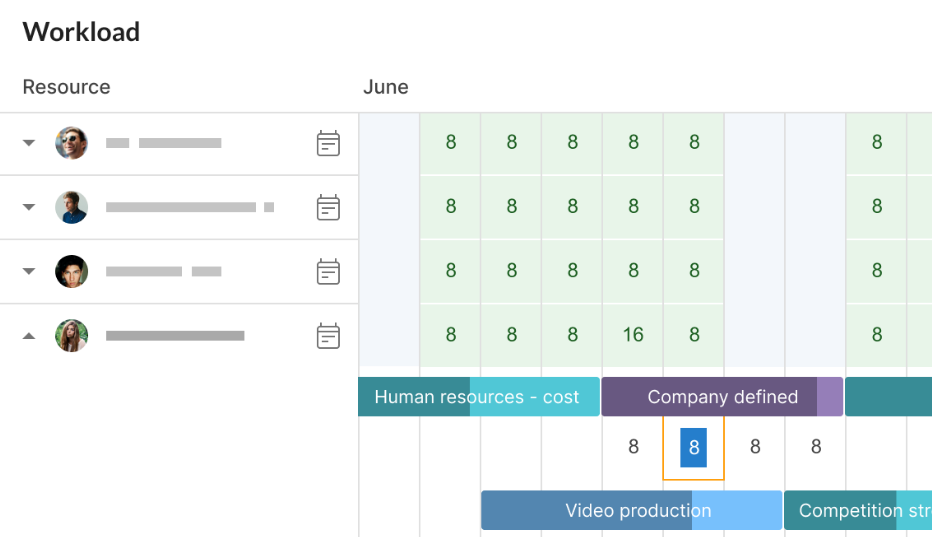
11. Cope with resource constraints and other obstacles
Project resource constraints refer to the limitations on the availability, utilization, and distribution of work assets critical for executing a certain project. These constraints can stem from various sources including limited assets, budget restrictions, competing projects, and the skill levels of personnel involved. They may often decrease team motivation and harm productivity.
This is confirmed by the RGPM research, where resource-related issues are among the top 5 productivity killers.

Therefore, project managers should effectively manage these constraints by considering detailed planning, prioritization, and work optimization.
12. Consider non-project time
Often, project managers don’t allow time for administrative issues, paid leave, personal matters, or unplanned situations within their projects.
It’s rather important to ensure that time is taken into account when planning for both long and short terms.
Make sure you provide a mechanism for recording such time slots. Otherwise, you may harm your team’s capacity and productivity.
13. Recognize risks and be ready for unforeseen circumstances
Strategic foresight is another valuable rule in the set of resource management best practices. When used effectively, it empowers you to bolster your team by proactively securing resources to foresee potential challenges that could impede your objectives.
Invest time in considering worst-case scenarios, assessing their probability of occurrence, and evaluating their potential consequences. Armed with this insight, prioritize the most critical risks, and develop strategies to mitigate their impact.
14. Review and adjust resources
Once resources are allocated and a project is underway, it’s crucial to concentrate on tracking and supervising to achieve consistent success in resource scheduling. It’s advisable to monitor your project’s progress meticulously to ensure it remains on track with its expected milestones.
Conduct regular reviews of your resources to avoid scheduling conflicts. Closely observing asset distribution and time allocation is essential for providing timely assistance.
15. Practice reporting as a good habit
It is important to utilize up-to-date data on workflows and resources to evaluate results, enhance processes, and plan for the future.
Comprehensive reporting enables managers and teams to gather critical insights, improving their efficiency in managing time.
With GanttPRO, all data is updated in real time. It eliminates the need for manual report compilation.
You can create two types of reports:
- Time log by people.
- Budget analysis.
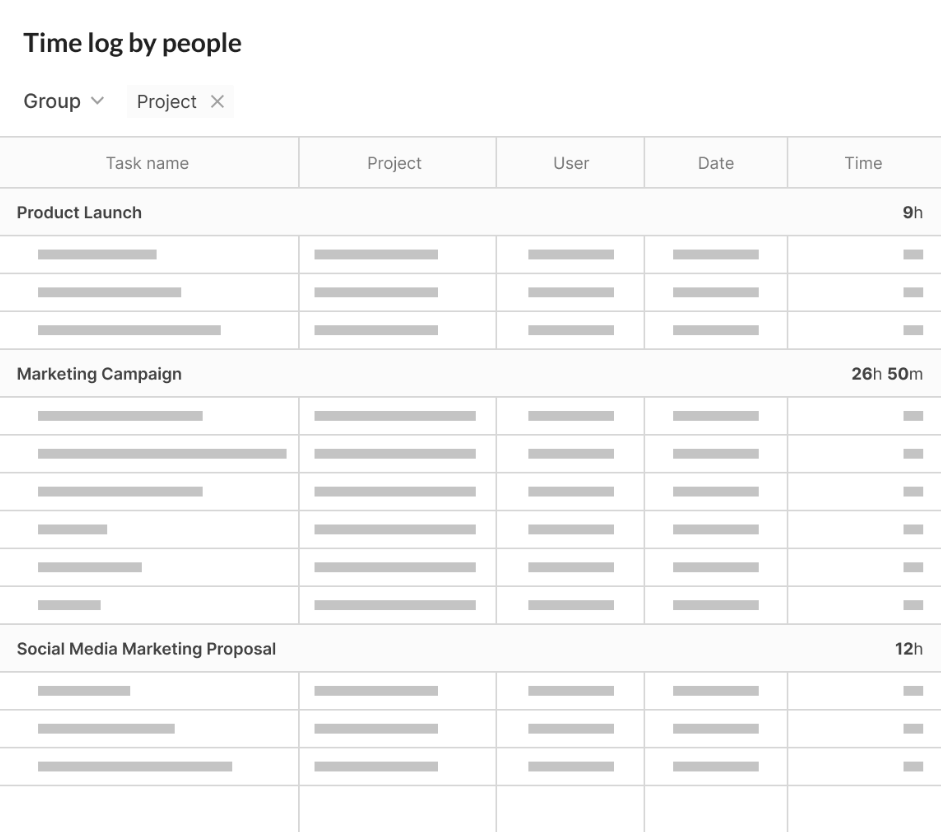
16. Keep in touch with industry experts
While you may excel in project management, collaborating with industry specialists can further enhance your effectiveness. These experts bring deep insights that vary greatly between fields. For example, construction resources differ from typical assets involved in educational projects.
Industry and subject matter experts not only predict potential trends and scenarios but also craft tailored solutions and innovative approaches to resource management issues. Whether they are seasoned team members, paid external consultants, or insightful stakeholders, their contributions can offer significant value through expert advice, guidance, and training.
17. Stay informed and competitive with the latest industry insights
By keeping abreast of current industry trends and technologies, you will empower your business to implement innovations rapidly.
Use advanced tools and strategies to reduce costs, avoid low-demand investments, and enhance employee competitiveness. Enhance your industry knowledge by engaging with relevant articles, subscribing to newsletters, attending key events, and expanding your network among peers and competitors.
Setting the right project direction with resource management best practices
Creating a healthy work environment where the best talents in the industry want to shine is a challenge for modern managers. The set of best practices for resource organization mentioned above is a smart way to ensure this work environment will improve.
Remember these practices and try to apply all of them, thinking about:
- Clear goals and objectives.
- Preliminary analysis of team capabilities.
- An appropriate type of a future resource calendar.
- Appropriate resource management software.
- Project budget.
- Task organization.
- Resource identification and allocation.
- Roles and responsibilities.
- Effective time control.
- Workload balance.
- Limited resources and other obstacles.
- Non-project time accounting.
- Risk management.
- Review and adjustment of resources.
- Detailed reporting.
- Connection with industry experts.
- Latest industry news.
The only logical step now is to implement these strategies.
If you’re ready to apply these resource management best practices, do it correctly. Take advantage of GanttPRO features and see how easy it can be to keep your project resources under control.
Frequently asked questions about resource management best practices
-
Here are some resource management best practices you may follow: set clear goals & objectives, analyze your team’s capacity, determine the type of your future resource calendar, choose resource management software, establish a project budget, organize tasks, identify and allocate resources, assign roles and responsibilities, control time, balance workload, cope with resource constraints, consider non-project time, recognize risks, review and adjust resources, practice detailed reporting, listen to the industry experts, and stay informed with the latest industry insights.
-
Effective resource management involves detailed planning and forecasting to anticipate needs, using technology to track and allocate resources, and continuously monitoring performance. Investing in training and fostering open communication is also crucial to maximizing productivity and ensuring all team members are aligned with organizational goals.
Read also
Join 1M+ project managers!
Create Gantt charts in minutes with GanttPRO and reduce time spent on managing tasks by 40%
Try for freeNo credit cards required. No obligation.

